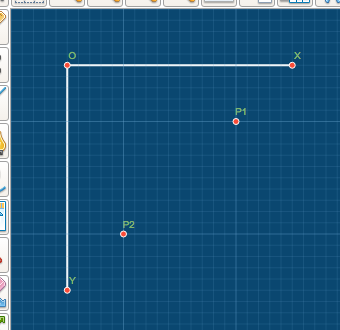Understanding Coordinates and Axes in Sewing Pattern Design
In sewing pattern design, coordinates and axes play a key role in positioning and measuring. If you're new to programming or haven't worked with sewing pattern design on paper before, don't worry! This section will explain these concepts in a simple and easy-to-understand way.
When you create sewing patterns, it's common to start from the top and work your way down, as well as from left to right. To make things easier, the Sewist pattern language follows this convention when setting up the axes.
Axes and Point of Origin
Imagine a coordinate system where you have two lines: one horizontal and one vertical. The horizontal line is called the X-axis, and it goes from left to right. The vertical line is called the Y-axis, and it's turned downwards instead of upwards like you might expect.
Now, let's talk about the zero point or origin. Picture it as the starting point in the upper left corner of your sewing pattern window. It's like the spot where you begin your journey.
Coordinates
To help you visualize this, take a look at the image on the right. It shows you how everything fits together.
Let's use two points, P1 and P2, as examples. Point P1 has coordinates (20, 10), and Point P2 has coordinates (10, 20). Don't worry, it's not as complicated as it sounds!
For P1, the first number (20) tells you how far to move along the X-axis, from left to right. The second number (10) tells you how far to move along the Y-axis, going down. So, P1 is 20 units to the right and 10 units down from the starting point.
Similarly, for P2, the first number (10) represents the distance along the X-axis, and the second number (20) represents the distance along the Y-axis. Therefore, P2 is 10 cm to the right and 20 cm down from the origin.
Understanding coordinates and axes is important when working with sewing pattern functions that involve positioning and measurements. But don't worry, with a little practice, you'll quickly get the hang of it! These concepts will help you create accurate and precise sewing patterns using the Sewist pattern language.
So, take a deep breath and remember, coordinates and axes are simply a way to find your place and measure distances. You've got this!
